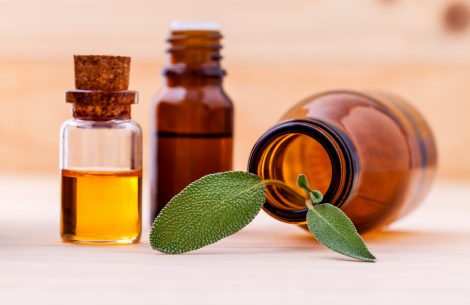Why are plant oils a great skincare choice? Besides being very absorbable and moisturizing, plant oils also contain nutrients that are beneficial for the skin. It’s not only the specific nutrients of plant oils that help skin, but biochemical compounds in the oil work synergistically to increase overall effectiveness. In other words, if you separate out one of the properties, it is not as effective as the whole. Extracting and using one or two compounds is a process that many commercial skincare companies employ.
Often people cringe at thought of using oils on the face, remembering their oily skin days from teen years. However, it’s not the same thing. The effects of natural plant oils and oil produced as a result of over-active sebaceous glands are different. Over-active sebaceous glands produce oil because of hormonal changes that can result in pimples. As you age out of puberty, this oil production stops except in the case of acne.
Talking about acne, there is another misconception about the use of plant oils and moisturizers. Here the thinking is that they clog pores, which cause breakouts. Certain plant oils can, in fact, balance skin oils. Not all plant oils are good for oily skin and acne, but there are a couple that is helpful.
Here are 6 highly effective oils that are wonderful for the skin.
Plant Oils for the Skin
Jojoba looks like oil, but it’s actually a wax eater. It is closest in characteristics to the skin’s natural sebum. Jojoba draws moisture to the skin, blocks against moisture loss, and can be used on the hair for shine. It is often called “dry oil” because of how easily it’s absorbed. It feels silky on the skin as opposed to feeling oily.
Sunflower while ordinary excels as a skin healer. It is rich in vitamin E. Researchers have found it beneficial for the skin of preterm babies and newborns. It’s beneficial for soothing chafed skin, after-shave bumps, and irritation.
Rosehip is a premier skin oil because of its vitamin C content. Vitamin C is known for the ability to repair skin. Rosehip is useful for wrinkles, aging skin, and scars. South American indigenous people have used it for hundreds of years for its healing properties.
Camelina oil contains omega-3 fatty acids. You may know of omega-3 benefits for inside the body. Those same properties make omega-3 great for the skin, especially for wrinkles and fine lines.
Argan oil is great for acne and oily prone skin. The properties of argan help to balance oils; it’s easily absorbed so it leaves no oily feeling. It’s also high in vitamin E, has antioxidants, and is good for hair.
Moringa oil is another oil being hailed for its ability to aid in the healing of acne. Moringa has anti-inflammatory compounds, which helps with the inflammation associated with acne. Antioxidants, vitamin A, and vitamin C are also found in moringa; these nutrients are important in healing and repairing skin. Moringa oil can also be applied to hair to smooth and strengthen it.
Except for a couple of the oils, they are inexpensive. Even then, the more expensive oils are less expensive than many manufactured face creams and are more effective. You can even get more benefit by combing a few of the oils together. Add a few drops of essential oil, such as lavender, to add another layer of nutrients and a nice scent.
The nutrients are known to help skin can be found in plant oils. Plant oils are great for moisturizing, healing, and improving skin texture. Purchase unrefined oils to get the maximum nutrients.
References:
- Carrier and Vegetable Oils. Mountain Rose Herbs. Retrieved from https://www.mountainroseherbs.com/catalog/ingredients/oils.
- Dweck, Anthony. The role of natural ingredients in anti-ageing of the skin. Australian Society of Cosmetic Chemists. PDF: http://naturalingredient.org/Articles/ASCC_paper.pdf.
- Moringa Benefits Hormonal Balance, Digestion, Mood, and More. Retrieved from https://draxe.com/moringa-benefits/.
- Williamson, E.M. Synergy and other interactions in phytomedicines. Retrieved from https://www.sciencedirect.com/science/article/pii/S0944711304700586.

